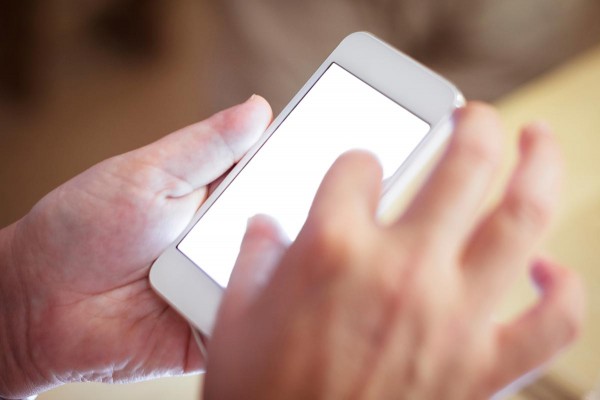
Dry-eye disease occurs when a person’s eyes fail to produce enough tears. Staring at a screen means your eyes blink less, leading your tear film to evaporate more quickly. This causes your eyes to become swollen, red and irritated. While this is most often seen in older people, experts believe the problem is underdiagnosed in children.
People blink every three to four seconds under normal conditions; this grows to once every 10 to 12 seconds when looking at electronic screens. Using smartphones close to the face is even worse, as their small print forces the eyes to work even harder.
In the study, 916 Korean children who were between 7 and 12 years old were given eye exams. Of the 6.6 percent who met the criteria for dry-eye disease, 97 percent said they used smartphones for an average of 3.2 hours per day. Meanwhile, those who did not have symptoms of the problem averaged 37 minutes per day.
This is supported by a 2014 American Optometric Association survey that revealed that four fifths of children noted itchy, burning or tired eyes after prolonged electronic device use.
Another problem caused by smartphone use is digital eye strain. This is a type of physical discomfort that people note after spending two hours or longer in front of digital screens. The Vision Council reports that 31 percent of Americans say they experience eye strain, while 22 percent experience dry eyes, and 22.1 percent report blurred vision.
Interestingly, more than 30 percent of parents who claim to be concerned about how digital devices will affect their children’s eyes nevertheless allow them to spend more than three hours per day looking at screens. This is something that needs to change immediately if parents want to preserve their children’s eye health.
Less time with screens, more time outdoors
Children who are glued to screens all day also spend less time outdoors, which compounds vision problems. According to an Ulster University study, short-sightedness rates among young people have doubled in the last 50 years, with nearly a quarter of British 12- and 13-year-olds suffering from myopia. In East Asia, 90 percent of children have the condition, and this rise is being blamed in part on a lack of daylight exposure. A Chinese study found that spending an extra 40 minutes outdoors each day could reduce myopia in children.
With the average child between the ages of 8 and 11 spending 4.5 hours each day in front a screen, and the average teen spending 6.5 hours a day doing the same, this epidemic is only likely to grow.
How can you prevent smartphone-related eye problems?
The most obvious solution here is to curb your smartphone use and insist that your children do the same. A diet rich in carotenoids can help boost eye functioning, so be sure to eat plenty of foods like sweet potatoes, carrots, spinach, pumpkins, broccoli, cantaloupe and goji berries. (Learn about other healthy foods and superfoods at Fresh.news) However, diet alone is not likely to counteract the bad effects of these devices. There are plenty of other reasons to eschew smartphone use, from sleep disruptions to privacy concerns, to the dangers of cell phone radiation.
If you must use a smartphone, limit yourself to shorter periods of time and follow the 20-20-20 rule: Give your eyes a rest by looking at something that is situated 20 feet off into the distance for 20 seconds after every 20 minutes of screen use. The Vision Council recommends using eyewear that can filter out the blue light responsible for much of the harm that comes from using smartphones. They also suggest reducing any overhead lighting to keep screen glare to a minimum, and staying at least an arm’s distance away from the screen.
Sources include:
Please contact us for more information.



















